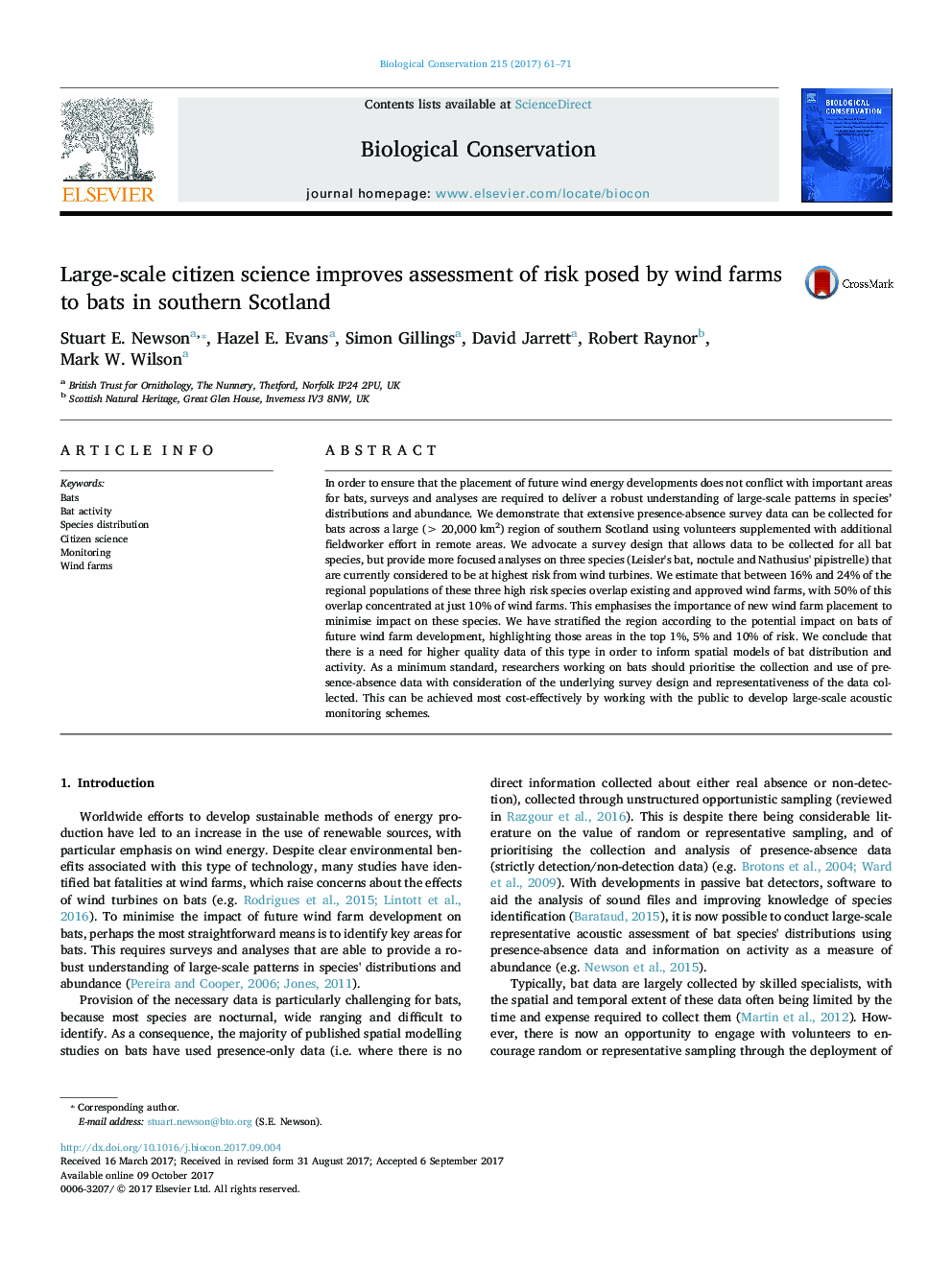| Article ID | Journal | Published Year | Pages | File Type |
|---|---|---|---|---|
| 5743022 | Biological Conservation | 2017 | 11 Pages |
In order to ensure that the placement of future wind energy developments does not conflict with important areas for bats, surveys and analyses are required to deliver a robust understanding of large-scale patterns in species' distributions and abundance. We demonstrate that extensive presence-absence survey data can be collected for bats across a large (>Â 20,000Â km2) region of southern Scotland using volunteers supplemented with additional fieldworker effort in remote areas. We advocate a survey design that allows data to be collected for all bat species, but provide more focused analyses on three species (Leisler's bat, noctule and Nathusius' pipistrelle) that are currently considered to be at highest risk from wind turbines. We estimate that between 16% and 24% of the regional populations of these three high risk species overlap existing and approved wind farms, with 50% of this overlap concentrated at just 10% of wind farms. This emphasises the importance of new wind farm placement to minimise impact on these species. We have stratified the region according to the potential impact on bats of future wind farm development, highlighting those areas in the top 1%, 5% and 10% of risk. We conclude that there is a need for higher quality data of this type in order to inform spatial models of bat distribution and activity. As a minimum standard, researchers working on bats should prioritise the collection and use of presence-absence data with consideration of the underlying survey design and representativeness of the data collected. This can be achieved most cost-effectively by working with the public to develop large-scale acoustic monitoring schemes.
